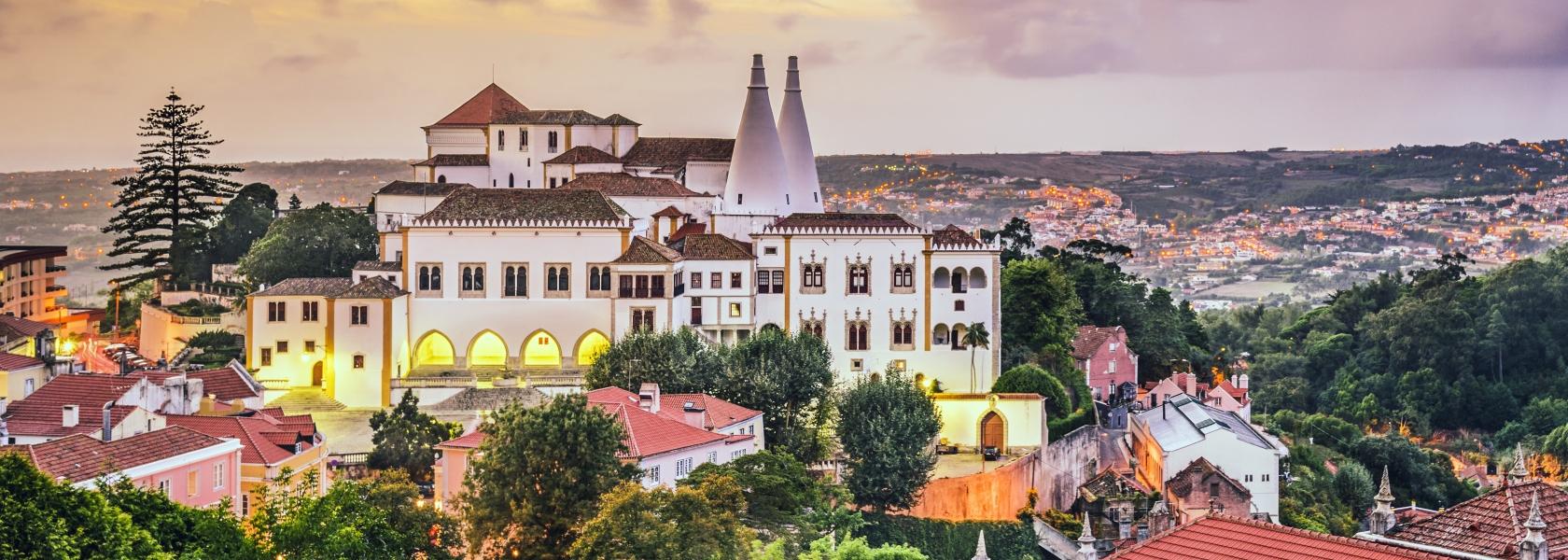TOP 10 EXPERIENCES
For Portugal
3. Visit the fairy-tale town of Sintra
As you go down the Estrada Chão de Meninos, the air seems cooler and in each breath you feel the humidity of the mist that often swirls here. This climatic shift is part of the whole mysterious and romantic setting that the word “Sintra” offers on your arrival. If you do visit, you will be welcome in this literary town, which was an inspiration for Lord Byron and the later Portuguese writer Eça de Queirós, among many others who referred to it in their works.
Ahead of you rises the ‘mountain of the moon’ that the ancient Celts once venerated, serving as the backdrop for a beautiful landscape. The remote Castelo dos Mouros (Moorish Castle) stands on the peak. The chapters of Sintra’s history, like the influences of various peoples, monarchs and artists on it, flow naturally and co-exist in harmony. As you start walking along the Volta do Duche, a road with an unusual name that means ‘Shower Turn’ that winds back and forth, offering lovely views over the picturesque town centre, you pass the imposing town council building and the nearby Queijadas da Sapa, which sells some of the best queijadas – little tarts with a cottage-cheese filling – as well as those at the Casa do Preto. (Along with travesseiros – flaky pastries with an eggy filling, queijadas are among the most famous and delicious local sweets).
In town, the Palácio Nacional, with its conical chimneys, faces various mansions perched on the hillside, amid narrow streets lined with little shops and cafés. But if you continue on along the main road, green soon predominates once more, in the form of soaring trees, dense undergrowth and also moss and ferns that adorn the houses here. The stunning Quinta da Regaleira marks the start of the climb towards the Palácio de Seteais and the Monserrate estate. The former, which was converted into a luxury hotel in the middle of the last century, has enchanting gardens and a viewpoint from whose arc you can see the Palácio da Pena, the high point of Romantic architecture among the town’s monuments. It was built for the then king-consort, Fernando II, who sought to reproduce in Sintra aspects of his native Bavaria. The latter comprises not only a sumptuous palace but also a pristine, sheltered park, with a waterfall and splendid lakes. But mentioning only these three monuments fails to do justice to the rich and diverse heritage that is found here.
Eça wrote that “All in Sintra is divine” and there is virtually no corner of town that is not a poem in itself. These verses are written as the soles of visitors’ shoes tread the narrow, modestly paved streets, with rhymes elaborated with the innocence of those who wander aimlessly, waiting to be enchanted.

